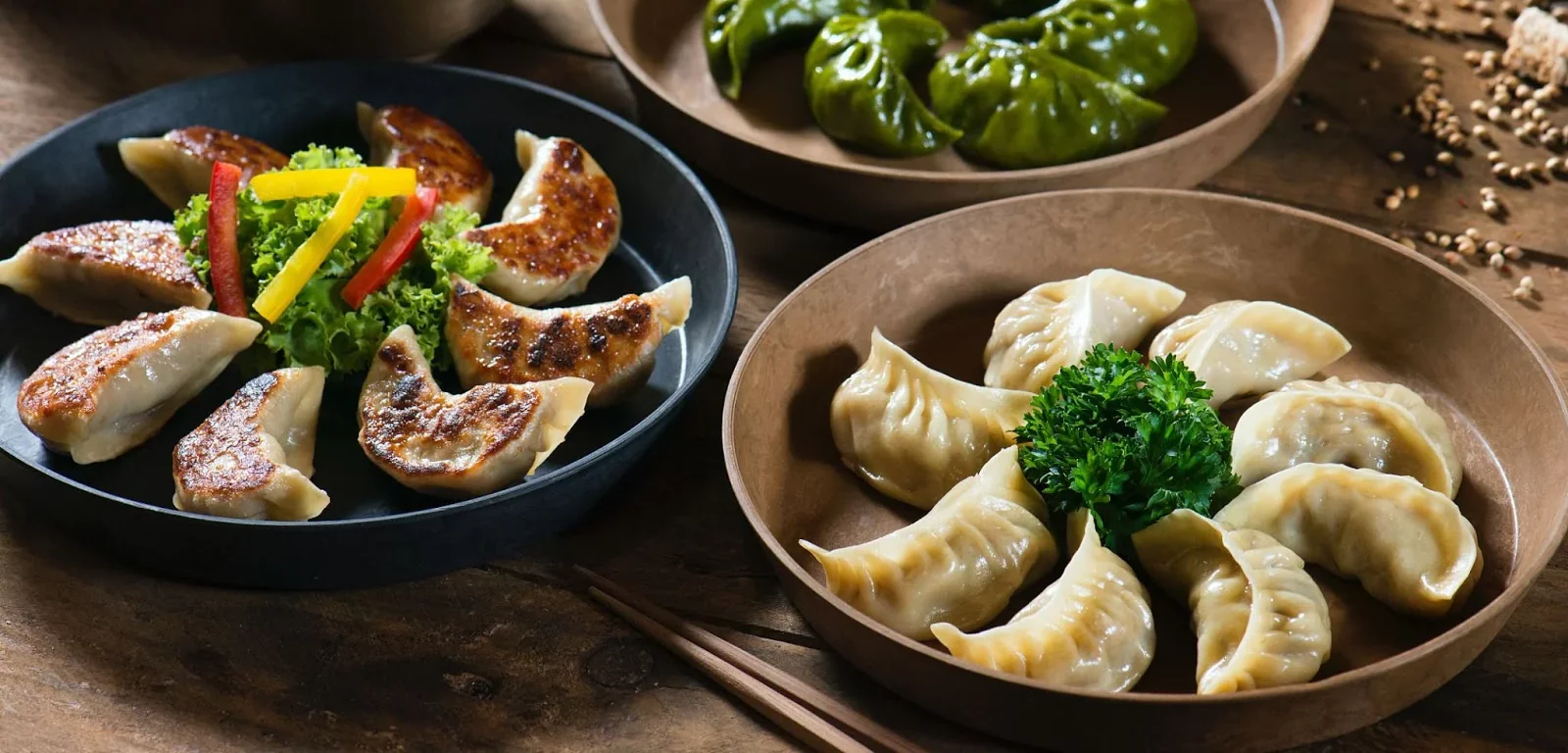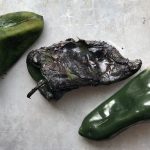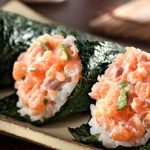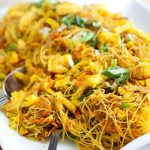Steamed vs Fried Dumplings

Though originating in Asia, dumplings are a type of food that is popular in many cultures around the world. They are small pieces of dough, often filled with various ingredients, and then cooked by boiling, steaming, frying, or baking.
The dough used for dumplings can be made from different ingredients, such as flour, potatoes, rice, or even bread. The filling can vary widely depending on the culinary tradition. Common fillings include meat (such as pork, beef, chicken, or seafood), vegetables, cheese, fruits, or a combination of these. In this article about fried vs steamed dumplings I would comparing fried dumplings to steamed dumplings citing all their differences and helping you choose which dumpling is best for you.
Dumplings usually come in the two forms of either fried or steamed so it is important that I explain the two different dumplings before we start the steamed vs fried dumplings comparison.
Steamed Dumplings

Steamed dumplings are a popular variety of dumplings that are cooked by the gentle heat of steam. This cooking method preserves the natural flavors and textures of the ingredients while creating a moist and tender dumpling. Steamed dumplings are usually tender and soft, a lot of people love this texture and feeling and that makes them a much more popular variation of dumplings among some cultures.
How To Make Steamed Dumplings
The process of making steamed dumplings typically involves a few key steps which you have to follow below.
- A dough is prepared using ingredients such as wheat flour, water, and sometimes a pinch of salt or oil. The dough is kneaded until it becomes smooth and elastic. It is then rested for a short period to allow the gluten to relax, making it easier to work with.
- The dough is rolled out into thin, round wrappers. The wrappers can be filled with a variety of ingredients, such as seasoned ground meat (pork, chicken, beef, or seafood), vegetables (cabbage, mushrooms, carrots, etc.), tofu, or a combination of these. You can season your filling is with spices, herbs, soy sauce, and other flavorings to enhance its taste.
- Start placing small amount of filling in the center of each wrapper. Then edges of the wrapper are then pleated or folded together to seal the filling inside, creating a distinctive dumpling shape. The finished dumplings (filled and wrapped) are arranged on a steamer basket or lined with cabbage leaves to prevent sticking.
- Place the steamer basket over a pot or wok filled with simmering water and allow it to be steamed for 10 to 15 minutes. Allow this till the wrappers visibly become translucent. Your steamed dumplings are ready to be served.
Fried Dumplings

Fried dumplings, also known as pan-fried or potstickers, are a delightful variation of dumplings that are cooked by frying in a pan. Frying your dumplings gives the dumplings a crisp and golden exterior while keeping the filling tender and flavorful. People and cultures who love crispy foods or heavily enjoy fried foods typically prefer fried dumplings to steamed dumplings. If you are one of those, below is instructions on how to make your fried dumplings.
How To Make Fried Dumplings
For the most part, the process for making fried dumplings isn’t much different from steamed dumplings, only the ending cooking part is different, which in this case involves cooking/frying in hot or fat as against cooking over steam.
- To make fried dumplings, your dough has to be prepared using ingredients such as wheat flour, water, and sometimes a pinch of salt or oil. The dough is kneaded until it becomes smooth and elastic. It is then rested for a short period to allow the gluten to relax, making it easier to work with.
- The dough is rolled out into thin, round wrappers. The wrappers can be filled with a variety of ingredients, such as seasoned ground meat (pork, chicken, beef, or seafood), vegetables (cabbage, mushrooms, carrots, etc.), tofu, or a combination of these. You can season your filling is with spices, herbs, soy sauce, and other flavorings to enhance its taste.
- Start placing small amount of filling in the center of each wrapper. Then edges of the wrapper are then pleated or folded together to seal the filling inside, creating a distinctive dumpling shape. The finished dumplings (filled and wrapped) are arranged on a steamer basket or lined with cabbage leaves to prevent sticking. It’s very important to seal the edges very tightly to prevent the fillings from spilling due to the heat from frying.
- Your fried dumplings are ready to be served.
Fried Vs Steamed Dumplings – What’s Best For You?
Clearly, from the cooking instructions on how to make fried dumplings and how to make steamed dumplings, there isn’t any major differences between the two types of dumplings but there are nevertheless, a small amount of difference, hence the need for the steamed vs fried dumplings article. Believe it or not, these tiny differences between steamed and fried dumplings form people’s decisions for choosing one dumpling over the other. In this section I’ll highlight the differences between the two of them. From these table of differences, you can choose which dumplings is best for you. Below is a table comparing steamed dumplings vs fried dumplings.
Steamed vs Fried Dumplings Comparison Table
| Steamed Dumplings | Fried Dumplings | |
|---|---|---|
| Cooking Method | Cooked by steaming using gentle heat. | Cooked by frying in a pan or skillet. |
| Texture | Soft, moist, and tender. | Crispy and golden on the outside, with a tender filling. |
| Flavor | Retains the natural flavors of the ingredients. | Develops a richer, slightly caramelized flavor due to frying. |
| Appearance | Translucent and smooth wrappers. | Golden brown and crispy exterior. |
| Cooking Time | Typically steamed for around 10-15 minutes. | Pan-fried until both sides are golden brown and crispy. |
| Dipping Sauce | Often served with soy-based dipping sauces or vinegar. | Served with a variety of dipping sauces, including soy sauce, vinegar, or chili oil. |
| Culinary Traditions | Common in various East Asian cuisines like Chinese, Japanese, and Korean. | Found in multiple Asian cuisines, including Chinese, Korean, and Southeast Asian cuisines. |
| Popular Names | Jiaozi (China), Gyoza (Japan), Mandu (Korea). | Potstickers (commonly used in English). |
| Usage | Consumed as appetizers, main courses, or as part of dim sum. | Enjoyed as appetizers, side dishes, or a snack. |
| Health Considerations | Steamed, which requires less oil, making them lower in fat. | Pan-fried, which requires more oil, resulting in higher fat content. |
As you can, the steamed dumplings appear to be a bit healthier since it contains much less oil than fried dumplings. You should be aware that this oil component does not constitute the only health differences between the two, it is just a key obvious difference you should be weary of. Also, if you’re one that loves tastier, flavorful foods then the choice obviously fried dumplings due to their much more flavorful wrappers that are equally crispy and make for a fantastic snack.
The choice of what dumplings to go for between the two types: fried dumplings and steamed dumplings, ultimate rests with you. Your taste and preferences and health needs would go a long to decide who is the winner in the age-old battle of fried vs steamed dumplings. There’s no one clear winner since everyone is going to choose according to what’s best for them. I for one prefer steamed dumplings. What do you prefer?



